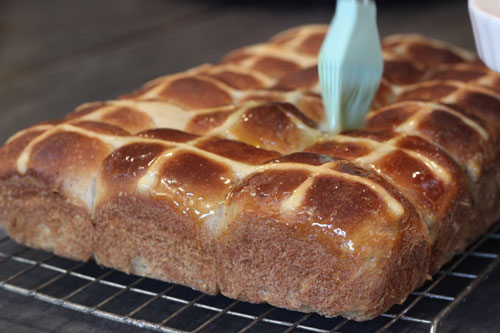Pin It
While poor Jamie Oliver attracted the wrath of a nation, I managed to get away with my version of "Pie-Ella". There are no mountains, there is no sea, there is not even a pinch of tradition, but ¡Dios mío! it tastes great!
The moment I hit “Publish”, the paella police were on their way over ...
The crime...
Taking a traditional celebration of the mountains and the
sea, removing the tradition, the mountains and the sea, and turning it into
mid-week WOW* supper.
*War on Waste
The plea... guilty, but
unrepentant...
Your honour, I swear I had no idea what I was doing when I
opened the fridge. I was day-dreaming about a trip I had to Majorca in the
distant past. My personal rain cloud accompanied me, and how! The island
suffered the worst storms and floods in decades - just for those couple of
weeks I was on holiday. However, I remembered a plate of golden paella I ate there, shivering on a
sheltered terrace watching a feeble sun battle in vain against storm clouds. It
was utter comfort food.
 |
| Hi! Remember me! |
Mitigating
circumstances...
Perhaps that's why I turned away from the straight-and-narrow
of my go-to creamy chicken curry for this quick and easy mid-week supper. This
week’s budget doesn’t run to prawns and rabbit, but I am pretty sure that paella evolved from humble origins, making
the most of available ingredients. Plus, one pan, and about 30 minutes - what's
not to love?
 |
| One pot, 30 minutes - what's not to love! |
The evidence...
Anyway, back to the fridge, which revealed the remains of a
cooked chicken – yawn... However, the fridge also held a jar of pimentos del piquillo (sweet roasted red
peppers – widely available) which can add sunshine to any dish, as well as a
nub of chorizo left over from the Cornish-ish pasties last week and I found
myself taking a detour. “I can resist
everything - save temptation”, as one of my fellow countrymen put it so
beautifully.
The witness for the
defence
Your honour, I call my rice-hating beloved who shovelled
three helpings into his mouth while sighing rapturously – ok so he’d missed
lunch but even so! Perhaps I should offer some to the paella police or would that compound the crime with bribery?
For 4 servings you will need...
3 tablespoons extra
virgin olive oil
1 onion, finely chopped
1 fat clove of garlic,
crushed
50g chorizo, cut into fat
slices then halved
2 large ripe tomatoes,
cut into bite-sized pieces
4 pimentos del piquillo, roughly chopped
1 green pepper (or
sweeter yellow pepper if you prefer), cut into strips
75g fresh or frozen petit pois, or sugar snap peas
400g cooked chicken, cut
into bite-sized pieces
250g paella rice (from your deli – a great store cupboard standby)
600mls good quality
chicken stock, hot
100mls dry white wine
½ teaspoon finely chopped
fresh thyme
Freshly ground black
pepper
1 tablespoon finely chopped fresh flat-leafed parsley
1
Heat
the olive oil in a large frying pan over a medium heat. I used a 30cm (12 inch)
pan for this recipe – in a paella you
are aiming to get as much rice as possible in contact with the pan. Add the
onion and cook until softened without colouring (about 5 minutes). Add the
crushed garlic and the chorizo and cook for a further minute. Add the tomatoes,
pimientos del piquillo, green pepper,
peas, chicken and rice and stir together for about a minute.
2
Now
add the hot stock, dry white wine, thyme and pepper. Stir to mix and turn down
the heat to a gentle simmer. Cook until all the stock has been absorbed by the
rice, the rice is tender and the mixture is no longer soupy (about 20-25 minutes). Removed from the
heat and cover with a clean tea-towel for about 5 minutes before sprinkling with the fresh parsley and serving on warm plates. The
sign of a good paella – whether WOW*
version or the traditional version – is the socarrat
– the delicious golden crust of rice at the bottom of the pan – the
bit that everyone fights over.
 |
| No mountains, no sea, no tradition, but rather tasty! |
Pin It
































